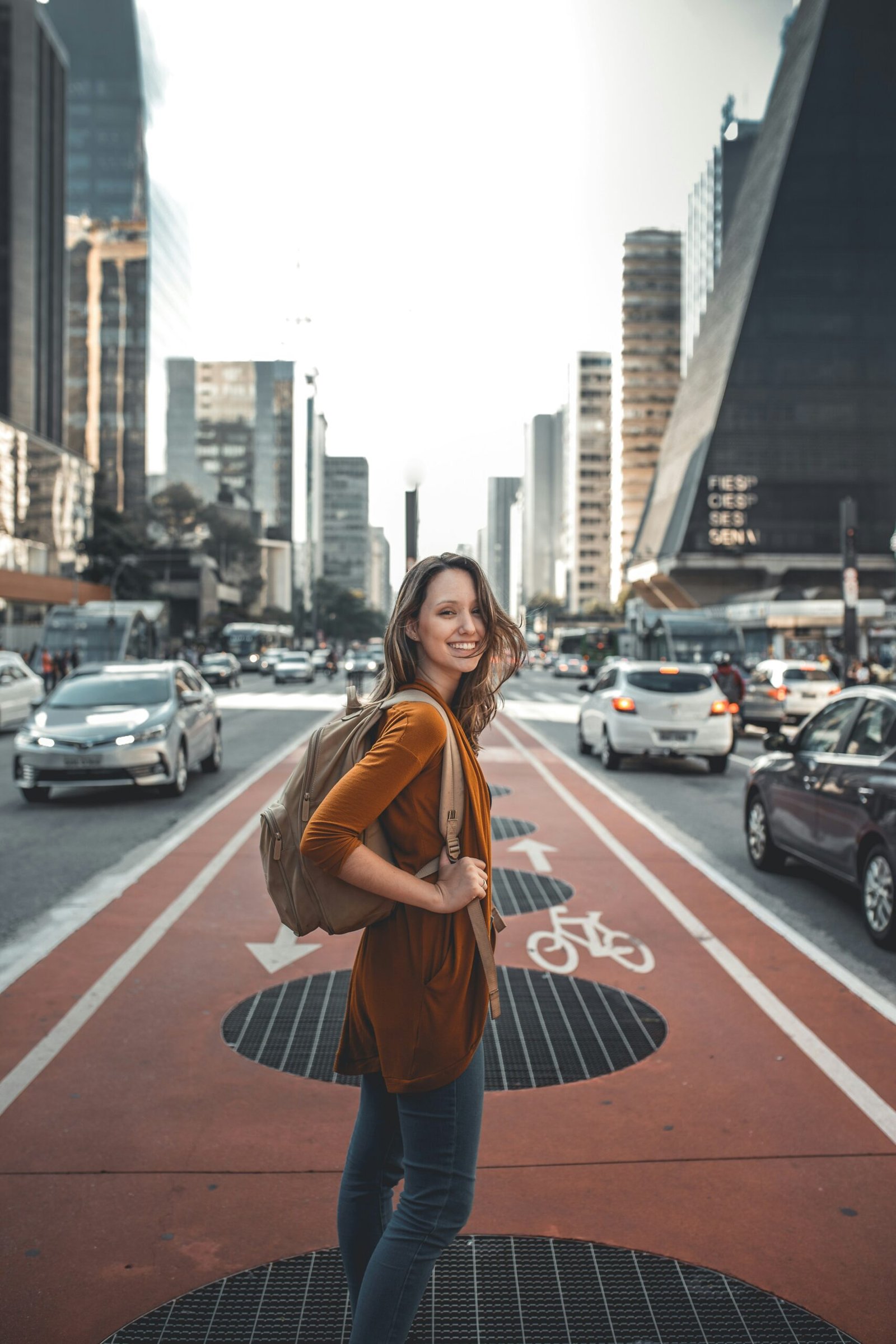The Art of Travel Portraits: Capturing Authentic Moments with Locals
Traveling is not just about visiting new places and experiencing different cultures; it’s also about connecting with people and capturing the essence of a destination through photography. One of the most rewarding aspects of travel photography is the opportunity to create authentic portraits of locals. These portraits not only serve as a visual documentation of your journey but also allow you to tell the stories of the people you meet along the way. In this article, we will explore the art of travel portraits and share some tips on how to capture authentic moments with locals.
When it comes to capturing authentic moments with locals, one of the most important things to remember is to approach your subjects with respect and genuine interest. People can often sense when they are being objectified or treated as mere props in a photograph, so it’s crucial to establish a connection and build trust before you start taking pictures.
One way to do this is by taking the time to get to know the person you want to photograph. Engage in a conversation, ask about their lives, and show a genuine interest in their stories. This not only helps you build rapport but also allows you to understand their personality, which can greatly enhance the authenticity of your portraits.
Another important aspect of capturing authentic moments with locals is to be patient and observant. Sometimes, the best photographs are the result of being in the right place at the right time and waiting for the perfect moment to unfold. Take the time to observe your surroundings, pay attention to the subtle gestures and expressions of the people you encounter, and be ready to capture those fleeting moments that often tell a powerful story.
Lighting is another crucial element in travel portraiture. Natural light can be your best friend when it comes to capturing authentic portraits. Look for soft, diffused light, such as during the golden hour (the hour after sunrise or before sunset), which provides a warm and flattering glow. Avoid harsh midday sun, as it can create unflattering shadows and highlights on your subject’s face.
Composition is also key in creating compelling travel portraits. Consider the background and framing of your shot to add context and visual interest to your image. Look for elements that can enhance the storytelling aspect of your photograph, such as local landmarks, traditional architecture, or cultural artifacts. These elements can help create a sense of place and add depth to your portraits.
Lastly, don’t be afraid to experiment and take risks with your travel portraits. While it’s important to have a plan and a vision in mind, some of the most memorable photographs are the result of spontaneity and embracing unexpected opportunities. Be open to new experiences, be willing to step out of your comfort zone, and be ready to capture those magical moments that can only happen when you let go of control.
In conclusion, capturing authentic moments with locals is an art form that requires a combination of technical skills, empathy, and creativity. By approaching your subjects with respect, being patient and observant, understanding the importance of lighting and composition, and embracing spontaneity, you can create travel portraits that not only showcase the beauty of a destination but also tell the stories of the people who call it home.
1. Establishing a Connection
When it comes to photographing locals, establishing a connection is key. People are generally more open and willing to be photographed if they feel comfortable and trust the photographer. Take the time to engage with the locals, learn about their culture, and show genuine interest in their lives. This will not only help you build a rapport but also create a more relaxed and natural atmosphere for the photoshoot.
Approach people with respect and ask for permission before taking their photo. A simple smile and a friendly gesture can go a long way in breaking the ice and making the locals feel at ease. Remember, it’s important to treat people with dignity and not view them as mere subjects for your photographs.
One effective way to establish a connection with the locals is to learn a few key phrases in their language. Even if you’re not fluent, making an effort to communicate in their native tongue shows respect and can help bridge any language barriers. Locals will appreciate your willingness to learn and engage with them on a deeper level.
Another important aspect of establishing a connection is to be patient. Building trust takes time, and rushing the process can lead to superficial interactions and forced smiles. Take the time to observe and understand the local customs and traditions. This will not only enhance your understanding of the culture but also allow you to capture more authentic and meaningful photographs.
In addition, it’s essential to be mindful of cultural sensitivities and norms. Different cultures have varying levels of comfort when it comes to being photographed. Some may be more reserved and prefer not to have their pictures taken, while others may be more open and enthusiastic. It’s crucial to be aware of these nuances and adjust your approach accordingly.
Overall, establishing a connection with the locals is not just about taking their photographs; it’s about building relationships and creating a mutual understanding. By showing genuine interest, respect, and patience, you can capture the true essence of a place and its people through your lens.
When it comes to capturing authentic moments, it is important to establish a connection with your subjects. Building rapport and gaining their trust will allow you to photograph them in their truest form. Take the time to introduce yourself, explain your intentions, and show genuine interest in their lives and experiences.
As a travel photographer, it is essential to be respectful of local customs and traditions. Take the time to learn about the culture and etiquette of the place you are visiting. This knowledge will not only help you navigate your surroundings but also enable you to capture moments that are culturally significant and meaningful.
Lighting plays a crucial role in capturing authentic moments. Natural light can add depth and emotion to your portraits, so it is important to understand how to use it to your advantage. Take note of the direction and quality of light in different locations and adjust your composition accordingly. Sometimes, shooting during the golden hour or in soft diffused light can enhance the authenticity of your images.
Composition also plays a vital role in capturing authentic moments. Consider the elements within your frame and how they contribute to the story you are trying to tell. Look for leading lines, interesting textures, or unique perspectives that can add visual interest and depth to your portraits. Remember that even the smallest details can make a significant impact on the overall composition.
In conclusion, capturing authentic moments in travel portraits requires a combination of observation, patience, and genuine connection with your subjects. By being mindful of the cultural context, using lighting to your advantage, and paying attention to composition, you can create powerful and meaningful images that truly reflect the essence of a place and its people.
3. Composition and Lighting
Composition and lighting play a crucial role in creating visually appealing travel portraits. Pay attention to the background and framing of your subjects. Look for interesting elements that can add depth and context to your photographs. Consider using the rule of thirds or leading lines to create a sense of balance and visual interest.
When composing your travel portraits, think about the story you want to tell. Are you capturing the essence of a bustling market or the tranquility of a secluded beach? The background and framing should enhance the narrative and provide a sense of place. For example, if you’re photographing a street performer, you might want to include the crowd gathered around them to show the energy and excitement of the moment.
Lighting is another crucial aspect of travel portrait photography. The right lighting can elevate your portraits from ordinary to extraordinary. When shooting portraits, soft and diffused light is generally more flattering than harsh sunlight. Try to shoot during the golden hour (early morning or late afternoon) when the light is softer and more pleasing. This will help to avoid harsh shadows and create a warm, inviting atmosphere in your photographs.
If you find yourself shooting in harsh lighting conditions, such as midday sun, you can use a diffuser or reflector to soften the light. A diffuser is a translucent material that you can hold between the sun and your subject to create a softer, more even light. A reflector, on the other hand, can be used to bounce light back onto your subject and fill in any shadows.
When shooting indoors, look for natural light sources like windows or doorways that can provide a soft and even illumination. You can also experiment with artificial lighting, such as using a flash or setting up a small studio lighting setup, to create different moods and effects in your portraits.
Experimenting with different angles and perspectives can also add variety to your portraits. Get down to eye level with your subjects to create an intimate connection and capture their unique perspective. Alternatively, try shooting from above to create a sense of vulnerability or playfulness. Don’t be afraid to break the rules and explore unconventional techniques to create visually striking portraits.
4. Respect and Ethical Considerations
As a travel photographer, it’s important to be mindful of the ethical considerations and respect the privacy and cultural sensitivities of the locals. Always ask for permission before taking someone’s photo and be respectful if they decline. Some cultures may have specific beliefs or customs regarding photography, so it’s essential to educate yourself about the local customs before your trip.
Avoid exploiting or objectifying the people you photograph. Your intention should be to celebrate their culture and capture their stories in a respectful and dignified manner. Be aware of the power dynamics at play and strive to create an equal and collaborative relationship with your subjects.
Respecting the privacy and cultural sensitivities of the locals goes beyond just asking for permission to take their photo. It also means being aware of the context in which you are photographing them. For example, if you are in a religious or sacred site, it’s important to dress appropriately and behave respectfully. This may mean covering your shoulders or legs, refraining from loud conversations, or refraining from taking photos altogether in certain areas.
Furthermore, it’s crucial to consider the impact your photography may have on the local community. While your intention may be to capture the beauty and uniqueness of a place, it’s important to be aware of the potential consequences of your actions. Avoid creating a sense of entitlement or superiority as a photographer and instead approach your subjects with humility and empathy.
One way to ensure that your photography is respectful and ethical is to engage with the local community. Take the time to learn about their traditions, customs, and way of life. This will not only deepen your understanding of the culture but also allow you to build trust and rapport with the people you photograph.
Additionally, consider the long-term impact of your photographs. Will they perpetuate stereotypes or reinforce harmful narratives? Or will they challenge preconceived notions and promote understanding and empathy? As a travel photographer, you have the power to shape perceptions and influence how others see the world. Use this power responsibly and ethically.
In conclusion, being a travel photographer comes with great responsibility. It’s not just about capturing beautiful images but also about respecting the people and cultures you encounter along the way. By being mindful of the ethical considerations and treating your subjects with respect and dignity, you can create meaningful and impactful photographs that celebrate diversity and foster understanding.







